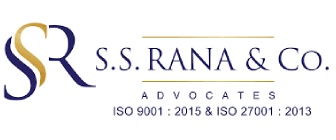Introduction
Legendary animator Hayao Miyazaki, the visionary behind Studio Ghibli- home to beloved classics like My Neighbour Totoro, Spirited Away and Princess Mononoke- has enchanted audiences worldwide with these meticulously hand- drawn films. His stories, rich in whimsy and human emotion, celebrate the natural worlds and take years to craft, with each frame painstakingly brought to life.
1
Now, OpenAI’s latest image- generation tool has made it convincingly possible to replicate Miyazaki’s signature style in mere seconds. This technology has exploded in popularity, flooding social media with AI-generated portraits in the iconic Studio Ghibli aesthetic in the past few days. However, this rapid adoption has also ignited broader discussions about the ethics of AI- generated art, raising concerns over copyright issues and the future of traditional animators and artists.
From Ghibli's Origins to Modern Innovation
Studio Ghibli, founded in 1985 by Hayao Miyazaki, Isao Takahata, and Toshio Suzuki, has earned global acclaim for its hand-drawn animation, intricate backgrounds, and deeply emotional storytelling. However, the rise of AI-generated art has sparked renewed debates about its ethical implications, with Miyazaki's strong stance on the matter resurfacing in the spotlight.
In 2016 , Miyazaki famously criticized AI technology, expressing strong disapproval during an AI demonstration by his team. ‘I would never wish to incorporate this technology into my work at all. I strongly feel that this is an insult to life itself.’2
The trend took off when OpenAI launched an advanced model capable of transforming images i.e- the creation of Ghibli-inspired art, where users transform their selfies and family photos into whimsical, animated masterpieces within seconds.
However, the tool's overwhelming success brought unforeseen challenges. Downdetector, a platform that tracks online service outages, reported a significant surge in issues related to OpenAI.3 The spike, which began around 4:19 PM on Sunday, March 30, 2025 saw a total of 219 user-reported problems. OpenAI CEO Sam Altman revealed that the surge in usage caused GPU overheating, leading to the temporary introduction of rate limits.4 Initially designed as a free feature, the unexpected demand forced the company to restrict the tool to paid users for now.
5
While earlier versions of ChatGPT included basic image-generation capabilities, OpenAI's latest version—powered by its cutting-edge GPT-4o model—has taken things to a completely new level. This technology allows for the creation of highly detailed images with minimal input, enabling possibilities that were previously unimaginable.
The debate surrounding AI, art, and ethics continues to evolve, leaving us to ponder the intersection of technology and human creativity.
AI, Copyright, and Creativity at Crossroads
The viral trend of AI-generated Ghibli-style portraits has reignited copyright concerns, particularly regarding AI tools trained on copyrighted materials. Legal questions, such as the implications of web scraping or database crawling for AI model training, remain at the forefront. Countries like India are currently addressing these issues, as seen in the ongoing case of ANI Media v. OpenAI in the Delhi High Court.
The widespread unauthorized copying, including examples like Disney-themed filters on Snapchat created without Disney's explicit permission, underscores the broader challenge of safeguarding intellectual property/ copyright in the digital age.
This trend exists in a copyright gray area, raising crucial questions:
- Transformative vs. Derivative Works: Content inspired by Ghibli’s aesthetic (e.g., soft colors, whimsical settings) versus direct copying of characters or scenes.
- Direct Copying: Replicating Ghibli-specific characters or styles without permission may violate copyright laws outright.
- Fair Use: Using Ghibli-style elements for parody, education, or commentary could qualify as fair use, but each case demands careful legal analysis.
The debate highlights the need for clarity in copyright law as technology advances at a rapid pace.
Fair Game or Artistic Theft?
The rise of AI-generated art has sparked concerns about its ethical implications, particularly the use of copyrighted works for training and its impact on artists’ livelihoods. Hayao Miyazaki, a strong advocate of hand-drawn animation, has voiced skepticism toward AI in art, questioning its respect for the craft.
Key issues include whether OpenAI obtained the necessary permissions for training its models and the extent to which AI creations might compete with or diminish Studio Ghibli's market. Though Studio Ghibli has not commented, its history of protecting intellectual property suggests that clear copying may lead to legal repercussions. The debate underscores the challenges of balancing technological innovation with artistic integrity.
Feba Sara Vinu, Assessment Intern at S.S. Rana & Co., has assisted in the research of this article.
______________________________________________________________________________________________
1 Spirited Away, 2001
2 https://www.indiewire.com/features/general/hayao-miyazaki-artificial-intelligence-animation-insult-to-life-studio-ghibli-1201757617/
3 https://www.thehindu.com/sci-tech/technology/chatgpt-faces-outage-amid-ghibli-art-frenzy-openai-says-services-back-on-track/article69395219.ece
4 https://x.com/sama/status/1906210479695126886
5 https://www.vogue.in/content/using-openai-to-create-studio-ghibli-style-images-of-yourself-is-not-the-flex-you-think-it-is


